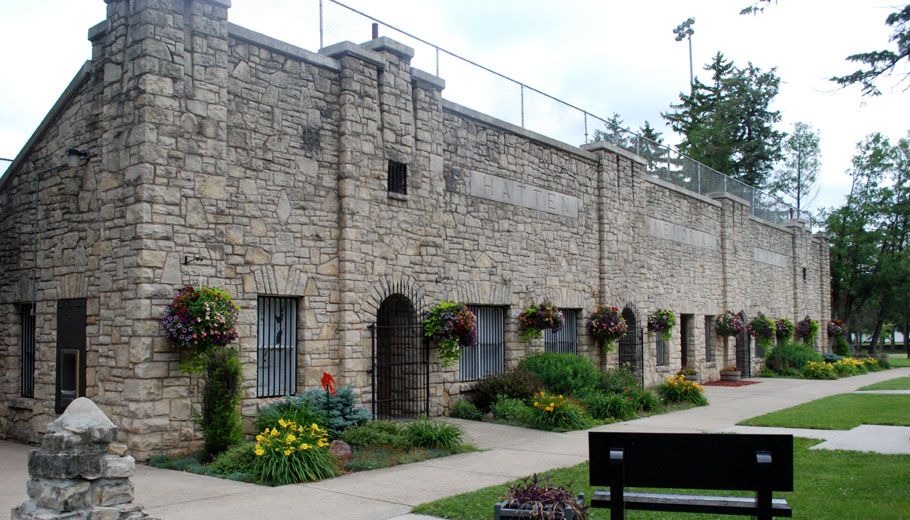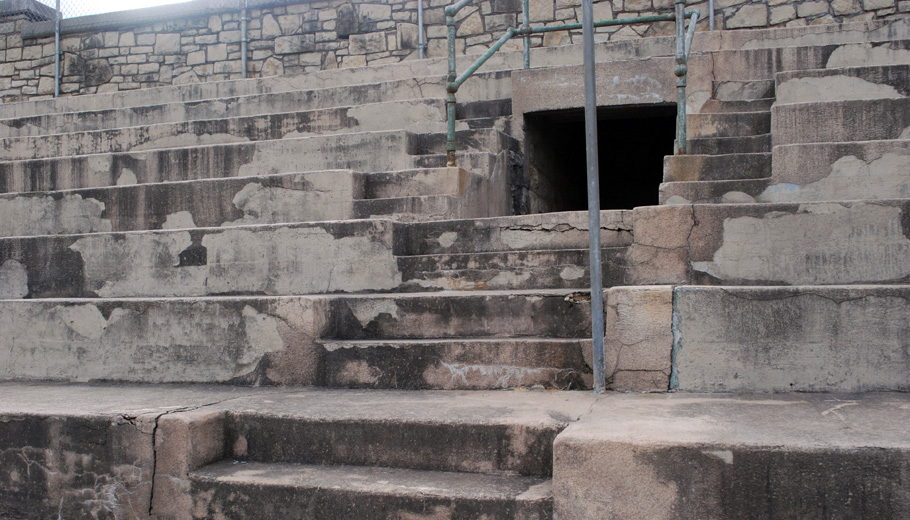
New London estimates total cost at $250,000
By Robert Cloud
Repairs to Hatten Stadium are expected to cost at least $250,000.
The city of New London hopes to share that cost with the New London School District and the Hatten Stadium Foundation.
Each of the three entities would provide approximately $84,000 toward the total cost.
At the July 5 Parks and Recreation Committee meeting, Parks and Rec Director Ginger Arndt described what she saw when inspecting the stadium during a rain storm.
“It was is in rough shape,” Arndt said. “I was underneath it last night and it’s wet and it’s leaking. I was able to see it as it was happening during the rain. It’s not going to last long if the rain continues to flow underneath that stadium like it did yesterday.”
In a related issue, Arndt said the city and school district have been in discussions about resurfacing the city’s tennis courts.
The city has eight courts: four at Hatten Park and two each at Pfeifer and Abraham parks.
Initially, the city asked the school district to split the approximately $350,000 costs evenly.
The project would place new asphalt and correct the diagonal slope on the tennis courts. Arndt said the district declined the city’s request.
The city then asked the district to cover about one-third of the costs. The district declined that request as well, Arndt said.
Capital projects
Finance Director Judy Radtke said the committee needs to consider the city’s commitment to ongoing and planned capital projects and related bonding before making decisions on additional projects.
“We have to look at where we are with bonding and with our street projects,” Radtke said, noting that engineers have updated the cost estimates.
In 2023, the city plans to spend approximately $460,000 on St. John’s Place, $314,500 on Lincoln Court, $288,000 on State Street and $400,000 on a downtown parking lot.
Lucas Court is also planned for 2023, but the city has not determined its costs yet.
Future spending on capital projects include $2.4 million on North Water Street and $500,000 on the library in 2024; $5.97 million on Oshkosh Street and Beckert Road in 2025; and $806,000 on Mill Street in 2026.
The city also expects to spend nearly $1.3 million on the wastewater treatment facility in the near future.
Total expenditures for capital projects is expected to reach about $13 million.
“Hopefully, inflation will settle down here and things will even out over time, but you know these numbers are going up as time goes on,” Radtke said.
Radtke said New London will issue bonds for nearly $5 million in 2023-24.
As of Dec. 31, 2021, the city of New London has $10.29 million in outstanding general obligation debt.
Under state law, municipal debt is limited to 5% of its equalized value of taxable property within city limits.
That amounts to a $22.5 million debt limit for the city of New London.
Keeping debt at one third of legal capacity helps the city’s interest rates on bonds remain lower, Radtke said.
She said the city will pay off another $1 million over the next two years.
Radtke said the city is already at its full debt capacity and will not be able to bond for Hatten Stadium until at least 2027.

Tennis courts, Hatten Stadium
Regarding the tennis courts, Radtke said city residents would pay those costs twice, once as city taxpayers and again as school district taxpayers.
“I would consider putting the dollars into Hatten Stadium, which is our facility, and backing off on the tennis courts,” Radtke said.
She also noted the estimated costs for the tennis courts is now closer to $500,000.
Jim Jaeger is a citizen member of the Parks and Rec Committee and a member of the Hatten Stadium Foundation. He discussed the stadium’s history.
“Hatten Stadium was completed in 1935,” he said. “It has been used as a baseball stadium and a football stadium by the high school for many, many years with no help from the school system whatsoever.”
Jaeger said if the city allows the stadium to further deteriorate, “the only thing that’s going to happen is that we tear it down.”
The committee later voted unanimously to decline helping the school district with upgrading the tennis courts and direct its attention and funds to repairing Hatten Stadium.
